|
Rispondi |
Messaggio 1 di 10 di questo argomento |
|
|
|
|
 Primo
Primo
 Precedente
2 a 10 di 10
Successivo
Precedente
2 a 10 di 10
Successivo
 Ultimo
Ultimo

|
|
Rispondi |
Messaggio 2 di 10 di questo argomento |
|
-
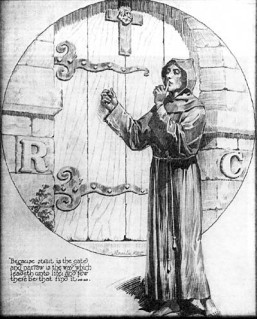 |
| Christian Ronsenkreuz |
V.I.T.R.I.O.L (Masonic/Alchemical Motto)
The alchemical motto for vitriol is “Visita Interiora Terrae Rectificando Invenies Occultum Lapidem,” “Visit the interior of the earth and rectifying (purifying) you will find the hidden stone.” The motto originated in L’Azoth des Philosophes by the 15th Century alchemist Basilius Valentinus.

In chemistry, vitriol is iron or copper sulfate salts and their derivative, sulfuric acid. The name comes from the Latin for “glassy,” after the resemblance of iron sulfate to shards of green glass. Vitriol is symbolized alchemically as the “green lion,” a poisonous substance that appears when metal is degraded by acid. Sulfuric acid, or oil of vitriol, was used in the synthesis of the lapis philosophorum- the Philosopher’s Stone. One unique property of sulfuric acid is the dissolution of metals- all except for gold, on which it has no effect.
 |
| Iron sulfate |
 |
| Green Lion through fire purification we obtain the red Lion |


Occurrence : Sulphur occurs in free state in many parts of world and has been known since prehistoric times.
The name sulphur is derived from the Sanskrit name ‘Shulbary’ meaning enemy of copper (Sulphur was known in ancient time to destroy the metallic property of copper). Deposits of free elemental sulphur occur in areas of volcanic activity. The natural sources of occurrence of sulphur in combined state are (i) H2S in sour natural gas and organic compounds containing sulphur in crude oil, (ii) pyrite (FeS2) and other metal sulphide minerals and (iii) sulphate minerals like gypsum (CaS04). Sulphur : The Element
Sulphur (S) is a non metal belonging to the VIA group / group 16 and the 3rd period in the p-block of periodic table. It is placed below oxygen. The atomic number of sulphur is 16 with electronic configuration (2,8,6). The atomic mass of sulphur is 32. lu. Sulphur shows a variable valency of 2,4 and 6 (e.g. H2S, S02, SO3 are the compounds of sulphur).
Properties of Sulphur : Physical Properties :Sulpur is a non- metallic, brittle, yellow solid. It is insoluble in water but dissolves in organic solvents such as carbon disulphide, methyl benzene. It is a bad conductor of electricity in solid, molten and dissolved state.
Allotropes of Sulphur: Sulphur exists in two crystalline solid forms, rhombic sulphur and inonoclinic sulphur The property by which an element exists in two or more forms is called allotropy. Different forms of element are known as allotropes. The allotrope rhombic sulphur is stable at temperatures below 94.5°C. Therefore, sulphur is normally found in this form. When rhombic sulphur is heated to 94.5°C if is transformed into the other allotrope called monoclinic sulphur. Monoclinic sulphur is stable between 94.5°C to 120°C. If monoclinic sulphur is cooled it transforms into rhombic sulphur at 94.5°C. The shapes of rhombic and monoclinic sulphur are shown in Fig. 1.4.

When molten sulphur is cooled, it solidifies into monoclinic sulphur. Sublimate of sulphur is called ‘flower of sulphur’. When sulphur is obtained by a chemical reaction as precipitate it is called ‘milk of sulphur’. These are made up of rhombic sulphur. Scientists have discovered many more allotropes of sulphur under different conditions.
All of them get transformed into rhombic sulphur at room temperature.
Sulphur has catenating power. It forms strong S-S covalent bonds. This results in formation of Sg molecules. Sg molecules have a shape of a crown like ring (Fig. 1.5). Both, rhombic and monoclinic sulphur contain S8 rings. At high temperatures smaller molecules like Sg, S4, S2, S also exist.

 |
| Rhombic sulfur and the unfinished pyramid |
 |
| Kether the Crown of the Kabbalah |
Sulfur or sulphur ( /ˈsʌlfər/ SUL-fər; see spelling below) is the chemical elementwith atomic number 16, represented by the symbol S. It is an abundant, multivalentnon-metal. At normal conditions, sulfur atoms form cyclic octatomic molecules with chemical formula S8. Elemental sulfur is a bright yellow crystalline solid. Chemically, sulfur can react as either an oxidant orreducing agent. It oxidizes most metals and several nonmetals, including carbon, which leads to its negatives charge in mostorganosulfur compounds, but it reduces several strong oxidants, such as oxygenand fluorine. /ˈsʌlfər/ SUL-fər; see spelling below) is the chemical elementwith atomic number 16, represented by the symbol S. It is an abundant, multivalentnon-metal. At normal conditions, sulfur atoms form cyclic octatomic molecules with chemical formula S8. Elemental sulfur is a bright yellow crystalline solid. Chemically, sulfur can react as either an oxidant orreducing agent. It oxidizes most metals and several nonmetals, including carbon, which leads to its negatives charge in mostorganosulfur compounds, but it reduces several strong oxidants, such as oxygenand fluorine.
In nature, sulfur can be found as the pure element and as sulfide and sulfate minerals. Elemental sulfur crystals are commonly sought after by mineral collectors for their brightly colored polyhedron shapes. Being abundant in native form, sulfur was known in ancient times, mentioned for its uses inancient Greece, China and Egypt.

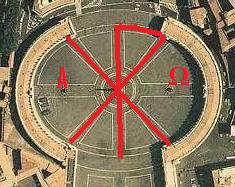 |
| St Peters Square Vatican octagonal division |
 |
| Mount temple top view |
 |
| Mount temple fron view |
 |
| Orpheus ceiling |

|
|
|
|
Rispondi |
Messaggio 3 di 10 di questo argomento |
|
|

Honey comb


 |
| Copper sulfate crystal |
The rhombic dodecahedron forms the hull of the vertex-first projection of a tesseract to 3 dimensions. There are exactly two ways of decomposing a rhombic dodecahedron into 4 congruent parallelepipeds, giving 8 possible parallelepipeds. The 8 cells of the tesseract under this projection map precisely to these 8 parallelepipeds.
The rhombic dodecahedron forms the maximal cross-section of a 24-cell, and also forms the hull of its vertex-first parallel projection into 3 dimensions. The rhombic dodecahedron can be decomposed into 6 congruent (but non-regular) square dipyramids meeting at a single vertex in the center; these form the images of 6 pairs of the 24-cell’s octahedral cells. The remaining 12 octahedral cells project onto the faces of the rhombic dodecahedron. The non-regularity of these images are due to projective distortion; the facets of the 24-cell are regular octahedra in 4-space.
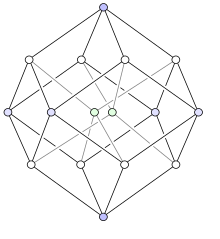
This decomposition gives an interesting method for constructing the rhombic dodecahedron: cut a cube into 6 congruent square pyramids, and attach them to the faces of a second cube. The triangular faces of each pair of adjacent pyramids lie on the same plane, and so merge into rhombuses. The 24-cell may also be constructed in an analogous way using two tesseracts.
The tesseract represents 4 th dimension and is the projection or shadow of the rhombic dodecahedron
 |
| A 3D projection of an 8-cell performing adouble rotation about two orthogonal planes |
1111 familiar ?
 |
| The rhombic dodecahedron forms the convex hull of the tesseracts vertex-first parallel-projection. The number of vertices in the layers of this projection is 1 4 6 4 1 – the fourth row in Pascal’s triangle. |
Pascal triangle
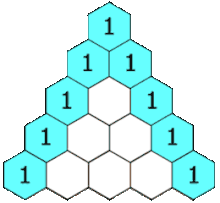 |
| Each number in the triangle is the sum of the two directly above it. |
Patterns and properties
Pascal’s triangle has many properties and contains many patterns of numbers.
- When adding all the digits in a single row, each successive row has twice the value of the row preceding it. For example, row 1 has a value of 1, row 2 has a value of 2, row 3 has a value of 4, and so forth.
- The value of a row, if each entry is considered a decimal place (and numbers larger than 9 carried over accordingly) is a power of 11 ( 11n, for row n). Thus, in row two, ’1,2,1′ becomes 112, while ’1,5,10,10,5,1′ in row six becomes (after carrying) 161,051, which is 115. This property is explained by setting x = ’10′ in the binomial expansion of (x + 1)row=n, and adjusting values to the decimal system. But x can be chosen to allow rows to represent values in any base – such as base 3; 1 2 13['1,2,1'] = 42 (16), 2 1 0 13 ['1,3,3,1'] = 43 (64) – or base 9; 1 2 19 = 102 (100), 1 3 3 19 = 103 (1000) and 1 6 2 1 5 19 ['1,5,10,10,5,1'] = 105 (100,000). In particular (see next property), for x = 1 place value remains constant(1place=1). Thus entries can simply be added in interpreting the value of a row.
- The sum of the elements of row m is equal to 2m−1. For example, the sum of the elements of row 5 is 1 + 4 + 6 + 4 + 1 = 16, which is equal to 24 = 16. This follows from the binomial theorem proved above, applied to (1 + 1)m−1.
- If rows are numbered starting with n = 0, the sum of the elements in the row is simply 2n, so row 0 adds to 20 = 1, row 1 adds to 21 = 2, etc.
- Some of the numbers in Pascal’s triangle correlate to numbers in Lozanić’s triangle.
- The sum of the squares of the elements of row m equals the middle element of row (2m − 1). For example, 12 + 42 + 62 + 42 + 12 = 70. In general form:

- Another interesting pattern is that on any row m, wherem is odd, the middle term minus the term two spots to the left equals a Catalan number, specifically the (m + 1)/2 Catalan number. For example: on row 5, 6 − 1 = 5, which is the 3rd Catalan number, and (5 + 1)/2 = 3.
- Another interesting property of Pascal’s triangle is that in rows where the second number (immediately following ’1′) is prime, all the terms in that row except the 1s are multiples of that prime.
Square dipyramids or octahedron
A particularly popular polyhedron is the pyramid. If we restrict ourselves to regular polygons for faces, there are three possible pyramids: the triangle-based tetrahedron, the square pyramid, and the pentagonal pyramid. Being bounded by regular polygons, these last two fall within the class of Johnson solids. One interesting property of pyramids is that like the tetrahedron, their duals are also pyramids. (Incidentally, the Egyptian pyramids have square bases but the triangular side faces are not quite equilateral; they are very close to half a golden rhombus.)

 |
Louvre Pyramid and rhombic sulfur
( Note the structure is also build up with golden rhombus )
as above so below |
 |
| G of Geometry |

Golden ratio
 |
3.3.3.3
(Vertex figure)
In geometry, a vertex configuration (or vertex type, orvertex description) is a short-hand notation for representing the vertex figure of a polyhedron or tiling as the sequence of faces around a vertex. For uniform polyhedra there is only one vertex type and therefore thevertex configuration fully defines the polyhedron. (Chiral polyhedra exist in mirror image pairs with the same vertex configuration.)
A vertex configuration is given as a sequence of numbers representing the number of sides of the faces going around the vertex. A a.b.c means a vertex has 3 faces around it, with a, b, and c sides.
For example 3.5.3.5 means a vertex has 4 faces, alternating triangles and pentagons. This vertex configuration defines the vertex-uniform icosi dodecahedron polyhedron.
|
 |
| Solomon’s Signet Ring With Seal Diagram, “Isis Unveiled”, by Madame Blavatsky. |
 |
Double headed eagle illumiati symbol
The eagle symbolizes man, two sides left and right, divide and conquer
through was symbolized by the sword, the crown as them above. |

4.4.4 or D.D.D of Jean Cocteau
 |
The dual of a cube is an octahedron,
shown here with vertices at the cube face centers.
In geometry, polyhedra are associated into pairs called duals, where the vertices of one correspond to the faces of the other. The dual of the dual is the original polyhedron. The dual of a polyhedron with equivalent vertices is one with equivalent faces, and of one with equivalent edges is another with equivalent edges. So the regular polyhedra — the Platonic solids and Kepler-Poinsot polyhedra— are arranged into dual pairs, with the exception of the regular tetrahedron which is self-dual.
|
|
|
|
|
Rispondi |
Messaggio 4 di 10 di questo argomento |
|
An octahedron is the three-dimensional case of the more general concept of a cross polytope.
Orthographic projections
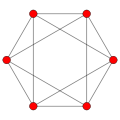 
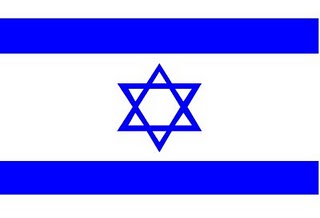

Star of David Freemasonery, magic hexagram

Planets in the macrocosm act in the same way as atoms in
a molecule.
Venus is the second planet from the Sun, orbiting it every 224.7 Earth days. The planet is named after Venus, the Romangoddess of love and beauty. After the Moon, it is the brightest natural object in the night sky, reaching an apparent magnitude of −4.6, bright enough to cast shadows. Because Venus is an inferior planet from Earth, it never appears to venture far from the Sun: its elongationreaches a maximum of 47.8°. Venus reaches its maximum brightness shortly before sunrise or shortly after sunset, for which reason it has been known as the Morning Star or Evening Star.
Venus is classified as a terrestrial planetand it is sometimes called Earth’s “sister planet” (see below) due to the similar size, gravity, and bulk composition. Venus is covered with an opaque layer of highly reflective clouds of sulfuric acid.
 |
Map of Venus, showing the elevated “continents” in yellow:
Ishtar Terra at the top and Aphrodite Terra just below the equator to the right |
Several lines of evidence point to ongoing volcanic activity on Venus. During the Soviet Venera program, the Venera 11 and Venera 12 probes detected a constant stream of lightning, and Venera 12 recorded a powerful clap of thunder soon after it landed. The European Space Agency’s Venus Express recorded abundant lightning in the high atmosphere.
Note : Number 11 repeats on space programs Apollo 11, Venera 11, remember
the illuminati always controlled both sides of power and this operations are
above the cold wars.
 |
| Venus is always brighter than the brightest stars |
Sulfur ( VITRIOL ) the morning star is the doorway to the fourth dimension
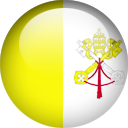
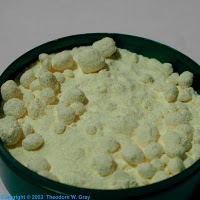

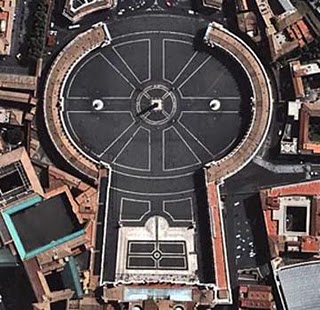 |
Note the key form and door on the entrance of the Vatican
symbolizing the 4 th dimension or underworld |
 |
| Note Goddess Isis and lock door to the underworld |

Venus is classified as a terrestrial planetand it is sometimes called Earth’s “sister planet” (see below) due to the similar size, gravity, and bulk composition. Venus is covered with an opaque layer of highly reflective clouds of sulfuric acid.

This highly reflective clouds of Venus interacts with your mental activity.
Your brain is a chemical battery and works through polarity, copper and zinc are balanced in serum.
Woman have higher levels of copper in serum reason why Venus is associated with the Goddess, fertility but also war and death.
The same reason why some contraceptive pills have copper which are regulated by woman oestrogens, reason why Pagan religions worshipped the sacred whore.
 |
| Staute of Liberty copper made ( French Revolution gift to the United States ) |
See copper and Lucifer post
This is also why Romans used courtesans ( whores ) as Mediums to channel the underworld ,
all the same the Nazis of Thule society and NASA with Jack Parsons and his Babalon whore
Marjorie.
 |
| Marija Orsic channelled UFO actual hidden technology |
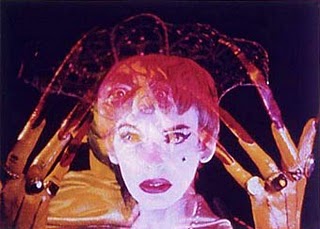 |
| Marjorie Cameron Jack Parson Nasa Whore |
The same for Saturn ( Satan ) which stands for Lead in Alchemy

Saturn symbol above the ram and child sacrifice
 |
| Lead sulfuric acid battery |
|
|
|
|
Rispondi |
Messaggio 5 di 10 di questo argomento |
|
| Lead sulfuric acid battery |

 |
Lead alchemical symbol
describes Saturn, Venus trajectory on the hexagram |
So as you can figure magic will be always the unknown, dimensions
can´t be yet demonstrated but intuited through knowledge.
Anyway as we can perceive through this analysis there´s no doubt dimensional
contact with the dead existed and was the basis of human knowledge as stated
by Aleister Crowley.
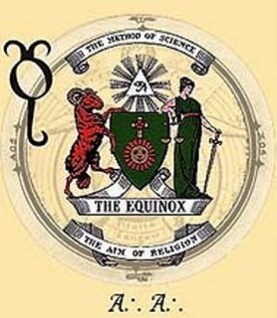 |
| THE EQUINOX, THE METHOD OF SCIENCE AND THE AIM OF RELIGION |
CARTESIAN COORDINATES
An octahedron can be placed with its center at the origin and its vertices on the coordinate axes; the Cartesian coordinates of the vertices are then
- ( ±1, 0, 0 );
- ( 0, ±1, 0 );
- ( 0, 0, ±1 ).
Area and volume
The surface area A and the volume V of a regular octahedron of edge length a are:
 
-
Thus the volume is four times that of a regular tetrahedron with the same edge length, while the surface area is twice (because we have 8 vs. 4 triangles).
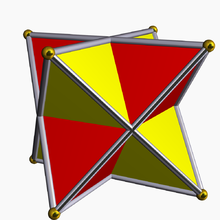 |
| The octahedron represents the central intersection of two tetrahedra |
 |
| Stella octangula and Toth, Hernes, Methatron etc |
Coloured in blue sulfur flame and the all seeing eye
The interior of the compound of two dual tetrahedra is an octahedron, and this compound, called the stella octangula, is its first and only stellation. Correspondingly, a regular octahedron is the result of cutting off from a regular tetrahedron, four regular tetrahedra of half the linear size (i.e. rectifyingthe tetrahedron). The vertices of the octahedron lie at the midpoints of the edges of the tetrahedron, and in this sense it relates to the tetrahedron in the same way that thecuboctahedron and icosidodecahedron relate to the other Platonic solids. One can also divide the edges of an octahedron in the ratio of the golden mean to define the vertices of an icosahedron. This is done by first placing vectors along the octahedron’s edges such that each face is bounded by a cycle, then similarly partitioning each edge into the golden mean along the direction of its vector. There are five octahedra that define any given icosahedron in this fashion, and together they define a regular compound.
Octahedra and tetrahedra can be alternated to form a vertex, edge, and face-uniformtessellation of space, called the octet truss by Buckminster Fuller. This is the only such tiling save the regular tessellation of cubes, and is one of the 28 convex uniform honeycombs. Another is a tessellation of octahedra and cuboctahedra.
The octahedron is unique among the Platonic solids in having an even number of faces meeting at each vertex. Consequently, it is the only member of that group to possess mirror planes that do not pass through any of the faces.
Using the standard nomenclature for Johnson solids, an octahedron would be called asquare bipyramid. Truncation of two opposite vertices results in a square bifrustum.
Uniform colorings and symmetry
There are 3 uniform colorings of the octahedron, named by the triangular face colors going around each vertex: 1212, 1112, 1111.
 |
The square tiling has 9 uniform colorings:
1111, 1112(a), 1112(b),
1122, 1123(a), 1123(b),
1212, 1213, 1234. |
 |
| 111 |

The octahedron’s symmetry group is Oh, of order 48, the three dimensional hyperoctahedral group. This group’s subgroups include D3d (order 12), the symmetry group of a triangularantiprism; D4h (order 16), the symmetry group of a square bipyramid; and Td (order 24), the symmetry group of a rectified tetrahedron. These symmetries can be emphasized by different colorings of the faces.
1111 and the octahedron again and our familiar number ?
 |
| Christian Ronsenkreuz |
V.I.T.R.I.O.L (Masonic/Alchemical Motto)
The alchemical motto for vitriol is “Visita Interiora Terrae Rectificando Invenies Occultum Lapidem,” “Visit the interior of the earth and rectifying (purifying) you will find the hidden stone.” The motto originated in L’Azoth des Philosophes by the 15th Century alchemist Basilius Valentinus.

In chemistry, vitriol is iron or copper sulfate salts and their derivative, sulfuric acid. The name comes from the Latin for “glassy,” after the resemblance of iron sulfate to shards of green glass. Vitriol is symbolized alchemically as the “green lion,” a poisonous substance that appears when metal is degraded by acid. Sulfuric acid, or oil of vitriol, was used in the synthesis of the lapis philosophorum- the Philosopher’s Stone. One unique property of sulfuric acid is the dissolution of metals- all except for gold, on which it has no effect.
 |
| Iron sulfate |
 |
| Green Lion through fire purification we obtain the red Lion |


Occurrence : Sulphur occurs in free state in many parts of world and has been known since prehistoric times.
The name sulphur is derived from the Sanskrit name ‘Shulbary’ meaning enemy of copper (Sulphur was known in ancient time to destroy the metallic property of copper). Deposits of free elemental sulphur occur in areas of volcanic activity. The natural sources of occurrence of sulphur in combined state are (i) H2S in sour natural gas and organic compounds containing sulphur in crude oil, (ii) pyrite (FeS2) and other metal sulphide minerals and (iii) sulphate minerals like gypsum (CaS04). Sulphur : The Element |
|
|
|
Rispondi |
Messaggio 6 di 10 di questo argomento |
|
Sulphur (S) is a non metal belonging to the VIA group / group 16 and the 3rd period in the p-block of periodic table. It is placed below oxygen. The atomic number of sulphur is 16 with electronic configuration (2,8,6). The atomic mass of sulphur is 32. lu. Sulphur shows a variable valency of 2,4 and 6 (e.g. H2S, S02, SO3 are the compounds of sulphur).
Properties of Sulphur : Physical Properties :Sulpur is a non- metallic, brittle, yellow solid. It is insoluble in water but dissolves in organic solvents such as carbon disulphide, methyl benzene. It is a bad conductor of electricity in solid, molten and dissolved state.
Allotropes of Sulphur: Sulphur exists in two crystalline solid forms, rhombic sulphur and inonoclinic sulphur The property by which an element exists in two or more forms is called allotropy. Different forms of element are known as allotropes. The allotrope rhombic sulphur is stable at temperatures below 94.5°C. Therefore, sulphur is normally found in this form. When rhombic sulphur is heated to 94.5°C if is transformed into the other allotrope called monoclinic sulphur. Monoclinic sulphur is stable between 94.5°C to 120°C. If monoclinic sulphur is cooled it transforms into rhombic sulphur at 94.5°C. The shapes of rhombic and monoclinic sulphur are shown in Fig. 1.4.

 |
| Rhombic sulfur and the unfinished pyramid |
 |
| Kether the Crown of the Kabbalah |
Sulphur has catenating power. It forms strong S-S covalent bonds. This results in formation of Sg molecules. Sg molecules have a shape of a crown like ring (Fig. 1.5). Both, rhombic and monoclinic sulphur contain S8 rings. At high temperatures smaller molecules like Sg, S4, S2, S also exist.
Sulfur or sulphur ( /ˈsʌlfər/ SUL-fər; see spelling below) is the chemical elementwith atomic number 16, represented by the symbol S. It is an abundant, multivalentnon-metal. At normal conditions, sulfur atoms form cyclic octatomic molecules with chemical formula S8. Elemental sulfur is a bright yellow crystalline solid. Chemically, sulfur can react as either an oxidant orreducing agent. It oxidizes most metals and several nonmetals, including carbon, which leads to its negatives charge in mostorganosulfur compounds, but it reduces several strong oxidants, such as oxygenand fluorine. /ˈsʌlfər/ SUL-fər; see spelling below) is the chemical elementwith atomic number 16, represented by the symbol S. It is an abundant, multivalentnon-metal. At normal conditions, sulfur atoms form cyclic octatomic molecules with chemical formula S8. Elemental sulfur is a bright yellow crystalline solid. Chemically, sulfur can react as either an oxidant orreducing agent. It oxidizes most metals and several nonmetals, including carbon, which leads to its negatives charge in mostorganosulfur compounds, but it reduces several strong oxidants, such as oxygenand fluorine.
In nature, sulfur can be found as the pure element and as sulfide and sulfate minerals. Elemental sulfur crystals are commonly sought after by mineral collectors for their brightly colored polyhedron shapes. Being abundant in native form, sulfur was known in ancient times, mentioned for its uses inancient Greece, China and Egypt.

 |
| St Peters Square Vatican octagonal division |
 |
| Mount temple top view |
 |
| Mount temple fron view |
 |
| Orpheus ceiling |


Honey comb


 |
| Copper sulfate crystal |
The rhombic dodecahedron forms the hull of the vertex-first projection of a tesseract to 3 dimensions. There are exactly two ways of decomposing a rhombic dodecahedron into 4 congruent parallelepipeds, giving 8 possible parallelepipeds. The 8 cells of the tesseract under this projection map precisely to these 8 parallelepipeds.
The rhombic dodecahedron forms the maximal cross-section of a 24-cell, and also forms the hull of its vertex-first parallel projection into 3 dimensions. The rhombic dodecahedron can be decomposed into 6 congruent (but non-regular) square dipyramids meeting at a single vertex in the center; these form the images of 6 pairs of the 24-cell’s octahedral cells. The remaining 12 octahedral cells project onto the faces of the rhombic dodecahedron. The non-regularity of these images are due to projective distortion; the facets of the 24-cell are regular octahedra in 4-space.

This decomposition gives an interesting method for constructing the rhombic dodecahedron: cut a cube into 6 congruent square pyramids, and attach them to the faces of a second cube. The triangular faces of each pair of adjacent pyramids lie on the same plane, and so merge into rhombuses. The 24-cell may also be constructed in an analogous way using two tesseracts.
|
|
|
|
Rispondi |
Messaggio 7 di 10 di questo argomento |
|
The tesseract represents 4 th dimension and is the projection or shadow of the rhombic dodecahedron
 |
| A 3D projection of an 8-cell performing adouble rotation about two orthogonal planes |
1111 familiar ?
 |
| The rhombic dodecahedron forms the convex hull of the tesseracts vertex-first parallel-projection. The number of vertices in the layers of this projection is 1 4 6 4 1 – the fourth row in Pascal’s triangle. |
Pascal triangle
 |
| Each number in the triangle is the sum of the two directly above it. |
Patterns and properties
Pascal’s triangle has many properties and contains many patterns of numbers.
- When adding all the digits in a single row, each successive row has twice the value of the row preceding it. For example, row 1 has a value of 1, row 2 has a value of 2, row 3 has a value of 4, and so forth.
- The value of a row, if each entry is considered a decimal place (and numbers larger than 9 carried over accordingly) is a power of 11 ( 11n, for row n). Thus, in row two, ’1,2,1′ becomes 112, while ’1,5,10,10,5,1′ in row six becomes (after carrying) 161,051, which is 115. This property is explained by setting x = ’10′ in the binomial expansion of (x + 1)row=n, and adjusting values to the decimal system. But x can be chosen to allow rows to represent values in any base – such as base 3; 1 2 13['1,2,1'] = 42 (16), 2 1 0 13 ['1,3,3,1'] = 43 (64) – or base 9; 1 2 19 = 102 (100), 1 3 3 19 = 103 (1000) and 1 6 2 1 5 19 ['1,5,10,10,5,1'] = 105 (100,000). In particular (see next property), for x = 1 place value remains constant(1place=1). Thus entries can simply be added in interpreting the value of a row.
- The sum of the elements of row m is equal to 2m−1. For example, the sum of the elements of row 5 is 1 + 4 + 6 + 4 + 1 = 16, which is equal to 24 = 16. This follows from the binomial theorem proved above, applied to (1 + 1)m−1.
- If rows are numbered starting with n = 0, the sum of the elements in the row is simply 2n, so row 0 adds to 20 = 1, row 1 adds to 21 = 2, etc.
- Some of the numbers in Pascal’s triangle correlate to numbers in Lozanić’s triangle.
- The sum of the squares of the elements of row m equals the middle element of row (2m − 1). For example, 12 + 42 + 62 + 42 + 12 = 70. In general form:

- Another interesting pattern is that on any row m, wherem is odd, the middle term minus the term two spots to the left equals a Catalan number, specifically the (m + 1)/2 Catalan number. For example: on row 5, 6 − 1 = 5, which is the 3rd Catalan number, and (5 + 1)/2 = 3.
- Another interesting property of Pascal’s triangle is that in rows where the second number (immediately following ’1′) is prime, all the terms in that row except the 1s are multiples of that prime.
Square dipyramids or octahedron
A particularly popular polyhedron is the pyramid. If we restrict ourselves to regular polygons for faces, there are three possible pyramids: the triangle-based tetrahedron, the square pyramid, and the pentagonal pyramid. Being bounded by regular polygons, these last two fall within the class of Johnson solids. One interesting property of pyramids is that like the tetrahedron, their duals are also pyramids. (Incidentally, the Egyptian pyramids have square bases but the triangular side faces are not quite equilateral; they are very close to half a golden rhombus.)

 |
Louvre Pyramid and rhombic sulfur
( Note the structure is also build up with golden rhombus )
as above so below |
 |
| G of Geometry |

Golden ratio
 |
3.3.3.3
(Vertex figure)
In geometry, a vertex configuration (or vertex type, orvertex description) is a short-hand notation for representing the vertex figure of a polyhedron or tiling as the sequence of faces around a vertex. For uniform polyhedra there is only one vertex type and therefore thevertex configuration fully defines the polyhedron. (Chiral polyhedra exist in mirror image pairs with the same vertex configuration.)
A vertex configuration is given as a sequence of numbers representing the number of sides of the faces going around the vertex. A a.b.c means a vertex has 3 faces around it, with a, b, and c sides.
For example 3.5.3.5 means a vertex has 4 faces, alternating triangles and pentagons. This vertex configuration defines the vertex-uniform icosi dodecahedron polyhedron.
|
 |
| Solomon’s Signet Ring With Seal Diagram, “Isis Unveiled”, by Madame Blavatsky. |
 |
Double headed eagle illumiati symbol
The eagle symbolizes man, two sides left and right, divide and conquer
through was symbolized by the sword, the crown as them above. |

4.4.4 or D.D.D of Jean Cocteau
 |
The dual of a cube is an octahedron,
shown here with vertices at the cube face centers.
In geometry, polyhedra are associated into pairs called duals, where the vertices of one correspond to the faces of the other. The dual of the dual is the original polyhedron. The dual of a polyhedron with equivalent vertices is one with equivalent faces, and of one with equivalent edges is another with equivalent edges. So the regular polyhedra — the Platonic solids and Kepler-Poinsot polyhedra— are arranged into dual pairs, with the exception of the regular tetrahedron which is self-dual.
Duality is also sometimes called reciprocity or polarity.
|
An octahedron is the three-dimensional case of the more general concept of a cross polytope.
Orthographic projections
 


Star of David Freemasonery, magic hexagram

Planets in the macrocosm act in the same way as atoms in
a molecule. |
|
|
|
Rispondi |
Messaggio 8 di 10 di questo argomento |
|
Venus is the second planet from the Sun, orbiting it every 224.7 Earth days. The planet is named after Venus, the Romangoddess of love and beauty. After the Moon, it is the brightest natural object in the night sky, reaching an apparent magnitude of −4.6, bright enough to cast shadows. Because Venus is an inferior planet from Earth, it never appears to venture far from the Sun: its elongationreaches a maximum of 47.8°. Venus reaches its maximum brightness shortly before sunrise or shortly after sunset, for which reason it has been known as the Morning Star or Evening Star.
Venus is classified as a terrestrial planetand it is sometimes called Earth’s “sister planet” (see below) due to the similar size, gravity, and bulk composition. Venus is covered with an opaque layer of highly reflective clouds of sulfuric acid.
 |
Map of Venus, showing the elevated “continents” in yellow:
Ishtar Terra at the top and Aphrodite Terra just below the equator to the right |
Several lines of evidence point to ongoing volcanic activity on Venus. During the Soviet Venera program, the Venera 11 and Venera 12 probes detected a constant stream of lightning, and Venera 12 recorded a powerful clap of thunder soon after it landed. The European Space Agency’s Venus Express recorded abundant lightning in the high atmosphere.
Note : Number 11 repeats on space programs Apollo 11, Venera 11, remember
the illuminati always controlled both sides of power and this operations are
above the cold wars.
 |
| Venus is always brighter than the brightest stars |
Sulfur ( VITRIOL ) the morning star is the doorway to the fourth dimension



 |
Note the key form and door on the entrance of the Vatican
symbolizing the 4 th dimension or underworld |
 |
| Note Goddess Isis and lock door to the underworld |

Venus is classified as a terrestrial planetand it is sometimes called Earth’s “sister planet” (see below) due to the similar size, gravity, and bulk composition. Venus is covered with an opaque layer of highly reflective clouds of sulfuric acid.

This highly reflective clouds of Venus interacts with your mental activity.
Your brain is a chemical battery and works through polarity, copper and zinc are balanced in serum.
Woman have higher levels of copper in serum reason why Venus is associated with the Goddess, fertility but also war and death.
The same reason why some contraceptive pills have copper which are regulated by woman oestrogens, reason why Pagan religions worshipped the sacred whore.
 |
| Staute of Liberty copper made ( French Revolution gift to the United States ) |
See copper and Lucifer post
This is also why Romans used courtesans ( whores ) as Mediums to channel the underworld ,
all the same the Nazis of Thule society and NASA with Jack Parsons and his Babalon whore
Marjorie.
 |
| Marija Orsic channelled UFO actual hidden technology |
 |
| Marjorie Cameron Jack Parson Nasa Whore |
The same for Saturn ( Satan ) which stands for Lead in Alchemy

Saturn symbol above the ram and child sacrifice
 |
| Lead sulfuric acid battery |

 |
Lead alchemical symbol
describes Saturn, Venus trajectory on the hexagram |
So as you can figure magic will be always the unknown, dimensions
can´t be yet demonstrated but intuited through knowledge.
Anyway as we can perceive through this analysis there´s no doubt dimensional
contact with the dead existed and was the basis of human knowledge as stated
by Aleister Crowley.
 |
| THE EQUINOX, THE METHOD OF SCIENCE AND THE AIM OF RELIGION |
CARTESIAN COORDINATES
An octahedron can be placed with its center at the origin and its vertices on the coordinate axes; the Cartesian coordinates of the vertices are then
- ( ±1, 0, 0 );
- ( 0, ±1, 0 );
- ( 0, 0, ±1 ).
Area and volume
The surface area A and the volume V of a regular octahedron of edge length a are:
 
-
Thus the volume is four times that of a regular tetrahedron with the same edge length, while the surface area is twice (because we have 8 vs. 4 triangles).
 |
| The octahedron represents the central intersection of two tetrahedra |
 |
| Stella octangula and Toth, Hernes, Methatron etc |
Coloured in blue sulfur flame and the all seeing eye
The interior of the compound of two dual tetrahedra is an octahedron, and this compound, called the stella octangula, is its first and only stellation. Correspondingly, a regular octahedron is the result of cutting off from a regular tetrahedron, four regular tetrahedra of half the linear size (i.e. rectifyingthe tetrahedron). The vertices of the octahedron lie at the midpoints of the edges of the tetrahedron, and in this sense it relates to the tetrahedron in the same way that thecuboctahedron and icosidodecahedron relate to the other Platonic solids. One can also divide the edges of an octahedron in the ratio of the golden mean to define the vertices of an icosahedron. This is done by first placing vectors along the octahedron’s edges such that each face is bounded by a cycle, then similarly partitioning each edge into the golden mean along the direction of its vector. There are five octahedra that define any given icosahedron in this fashion, and together they define a regular compound.
Octahedra and tetrahedra can be alternated to form a vertex, edge, and face-uniformtessellation of space, called the octet truss by Buckminster Fuller. This is the only such tiling save the regular tessellation of cubes, and is one of the 28 convex uniform honeycombs. Another is a tessellation of octahedra and cuboctahedra.
The octahedron is unique among the Platonic solids in having an even number of faces meeting at each vertex. Consequently, it is the only member of that group to possess mirror planes that do not pass through any of the faces.
Using the standard nomenclature for Johnson solids, an octahedron would be called asquare bipyramid. Truncation of two opposite vertices results in a square bifrustum.
Uniform colorings and symmetry
There are 3 uniform colorings of the octahedron, named by the triangular face colors going around each vertex: 1212, 1112, 1111.
 |
The square tiling has 9 uniform colorings:
1111, 1112(a), 1112(b),
1122, 1123(a), 1123(b),
1212, 1213, 1234. |
 |
| 111 |

The octahedron’s symmetry group is Oh, of order 48, the three dimensional hyperoctahedral group. This group’s subgroups include D3d (order 12), the symmetry group of a triangularantiprism; D4h (order 16), the symmetry group of a square bipyramid; and Td (order 24), the symmetry group of a rectified tetrahedron. These symmetries can be emphasized by different colorings of the faces.
1111 and the octahedron again and our familiar number ?
|
|
|
|
Rispondi |
Messaggio 9 di 10 di questo argomento |
|
 |
| Christian Ronsenkreuz |
V.I.T.R.I.O.L (Masonic/Alchemical Motto)
The alchemical motto for vitriol is “Visita Interiora Terrae Rectificando Invenies Occultum Lapidem,” “Visit the interior of the earth and rectifying (purifying) you will find the hidden stone.” The motto originated in L’Azoth des Philosophes by the 15th Century alchemist Basilius Valentinus.

In chemistry, vitriol is iron or copper sulfate salts and their derivative, sulfuric acid. The name comes from the Latin for “glassy,” after the resemblance of iron sulfate to shards of green glass. Vitriol is symbolized alchemically as the “green lion,” a poisonous substance that appears when metal is degraded by acid. Sulfuric acid, or oil of vitriol, was used in the synthesis of the lapis philosophorum- the Philosopher’s Stone. One unique property of sulfuric acid is the dissolution of metals- all except for gold, on which it has no effect.
 |
| Iron sulfate |
 |
| Green Lion through fire purification we obtain the red Lion |


Occurrence : Sulphur occurs in free state in many parts of world and has been known since prehistoric times.
The name sulphur is derived from the Sanskrit name ‘Shulbary’ meaning enemy of copper (Sulphur was known in ancient time to destroy the metallic property of copper). Deposits of free elemental sulphur occur in areas of volcanic activity. The natural sources of occurrence of sulphur in combined state are (i) H2S in sour natural gas and organic compounds containing sulphur in crude oil, (ii) pyrite (FeS2) and other metal sulphide minerals and (iii) sulphate minerals like gypsum (CaS04). Sulphur : The Element
Sulphur (S) is a non metal belonging to the VIA group / group 16 and the 3rd period in the p-block of periodic table. It is placed below oxygen. The atomic number of sulphur is 16 with electronic configuration (2,8,6). The atomic mass of sulphur is 32. lu. Sulphur shows a variable valency of 2,4 and 6 (e.g. H2S, S02, SO3 are the compounds of sulphur).
Properties of Sulphur : Physical Properties :Sulpur is a non- metallic, brittle, yellow solid. It is insoluble in water but dissolves in organic solvents such as carbon disulphide, methyl benzene. It is a bad conductor of electricity in solid, molten and dissolved state.
Allotropes of Sulphur: Sulphur exists in two crystalline solid forms, rhombic sulphur and inonoclinic sulphur The property by which an element exists in two or more forms is called allotropy. Different forms of element are known as allotropes. The allotrope rhombic sulphur is stable at temperatures below 94.5°C. Therefore, sulphur is normally found in this form. When rhombic sulphur is heated to 94.5°C if is transformed into the other allotrope called monoclinic sulphur. Monoclinic sulphur is stable between 94.5°C to 120°C. If monoclinic sulphur is cooled it transforms into rhombic sulphur at 94.5°C. The shapes of rhombic and monoclinic sulphur are shown in Fig. 1.4.

 |
| Rhombic sulfur and the unfinished pyramid |
When molten sulphur is cooled, it solidifies into monoclinic sulphur. Sublimate of sulphur is called ‘flower of sulphur’. When sulphur is obtained by a chemical reaction as precipitate it is called ‘milk of sulphur’. These are made up of rhombic sulphur. Scientists have discovered many more allotropes of sulphur under different conditions.
All of them get transformed into rhombic sulphur at room temperature.
 |
| Kether the Crown of the Kabbalah |
Sulphur has catenating power. It forms strong S-S covalent bonds. This results in formation of Sg molecules. Sg molecules have a shape of a crown like ring (Fig. 1.5). Both, rhombic and monoclinic sulphur contain S8 rings. At high temperatures smaller molecules like Sg, S4, S2, S also exist.
Sulfur or sulphur ( /ˈsʌlfər/ SUL-fər; see spelling below) is the chemical elementwith atomic number 16, represented by the symbol S. It is an abundant, multivalentnon-metal. At normal conditions, sulfur atoms form cyclic octatomic molecules with chemical formula S8. Elemental sulfur is a bright yellow crystalline solid. Chemically, sulfur can react as either an oxidant orreducing agent. It oxidizes most metals and several nonmetals, including carbon, which leads to its negatives charge in mostorganosulfur compounds, but it reduces several strong oxidants, such as oxygenand fluorine. /ˈsʌlfər/ SUL-fər; see spelling below) is the chemical elementwith atomic number 16, represented by the symbol S. It is an abundant, multivalentnon-metal. At normal conditions, sulfur atoms form cyclic octatomic molecules with chemical formula S8. Elemental sulfur is a bright yellow crystalline solid. Chemically, sulfur can react as either an oxidant orreducing agent. It oxidizes most metals and several nonmetals, including carbon, which leads to its negatives charge in mostorganosulfur compounds, but it reduces several strong oxidants, such as oxygenand fluorine.
In nature, sulfur can be found as the pure element and as sulfide and sulfate minerals. Elemental sulfur crystals are commonly sought after by mineral collectors for their brightly colored polyhedron shapes. Being abundant in native form, sulfur was known in ancient times, mentioned for its uses inancient Greece, China and Egypt.

 |
| St Peters Square Vatican octagonal division |
 |
| Mount temple top view |
 |
| Mount temple fron view |
 |
| Orpheus ceiling |


Honey comb


 |
| Copper sulfate crystal |
The rhombic dodecahedron forms the hull of the vertex-first projection of a tesseract to 3 dimensions. There are exactly two ways of decomposing a rhombic dodecahedron into 4 congruent parallelepipeds, giving 8 possible parallelepipeds. The 8 cells of the tesseract under this projection map precisely to these 8 parallelepipeds.
The rhombic dodecahedron forms the maximal cross-section of a 24-cell, and also forms the hull of its vertex-first parallel projection into 3 dimensions. The rhombic dodecahedron can be decomposed into 6 congruent (but non-regular) square dipyramids meeting at a single vertex in the center; these form the images of 6 pairs of the 24-cell’s octahedral cells. The remaining 12 octahedral cells project onto the faces of the rhombic dodecahedron. The non-regularity of these images are due to projective distortion; the facets of the 24-cell are regular octahedra in 4-space.

This decomposition gives an interesting method for constructing the rhombic dodecahedron: cut a cube into 6 congruent square pyramids, and attach them to the faces of a second cube. The triangular faces of each pair of adjacent pyramids lie on the same plane, and so merge into rhombuses. The 24-cell may also be constructed in an analogous way using two tesseracts.
Square dipyramids or octahedron
A particularly popular polyhedron is the pyramid. If we restrict ourselves to regular polygons for faces, there are three possible pyramids: the triangle-based tetrahedron, the square pyramid, and the pentagonal pyramid. Being bounded by regular polygons, these last two fall within the class of Johnson solids. One interesting property of pyramids is that like the tetrahedron, their duals are also pyramids. (Incidentally, the Egyptian pyramids have square bases but the triangular side faces are not quite equilateral; they are very close to half a golden rhombus.)

 |
Louvre Pyramid and rhombic sulfur
( Note the structure is also build up with golden rhombus )
as above so below |

Golden ratio
 |
3.3.3.3
(Vertex figure)
In geometry, a vertex configuration (or vertex type, orvertex description) is a short-hand notation for representing the vertex figure of a polyhedron or tiling as the sequence of faces around a vertex. For uniform polyhedra there is only one vertex type and therefore thevertex configuration fully defines the polyhedron. (Chiral polyhedra exist in mirror image pairs with the same vertex configuration.)
A vertex configuration is given as a sequence of numbers representing the number of sides of the faces going around the vertex. A a.b.c means a vertex has 3 faces around it, with a, b, and c sides.
|
|
|
|
|
Rispondi |
Messaggio 10 di 10 di questo argomento |
|
|
|
 Primo
Primo
 Precedente
2 a 10 de 10
Successivo
Precedente
2 a 10 de 10
Successivo
 Ultimo
Ultimo

|

